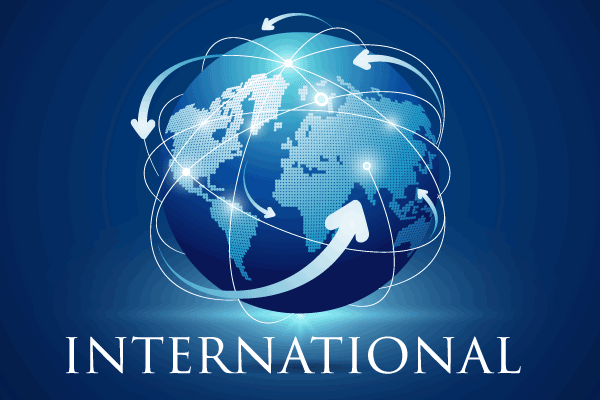 Negotiators among the 12 Trans-Pacific economies for the Trans-Pacific Partnership Agreement (TPP) successfully concluded their wide-ranging trade negotiations on October 5.
Negotiators among the 12 Trans-Pacific economies for the Trans-Pacific Partnership Agreement (TPP) successfully concluded their wide-ranging trade negotiations on October 5.
The TPP includes the 12 Trans-Pacific Partnership economies of Australia, Brunei Darussalam, Canada, Chile, Japan, Malaysia, Mexico, New Zealand, Peru, Singapore, the United States and Vietnam.
The California Chamber of Commerce supports the TPP trade agreement process as an important vehicle for economic integration throughout the Pacific.
This regional agreement of 30 chapters sets a high standard that will enhance the competitive of the countries that are a part of it, helping facilitate trade and promoting investment between participants in the agreement, increasing their economic growth and development.
Susanne Stirling explains the impact of the renewal of Trade Promotion Authority on the recently completed Trans-Pacific Partnership Agreement.
Benefits for Nation
According to the U.S Trade Representative’s Office, the TPP is the most significant trade negotiation in a generation, and promises significant economic benefits for American businesses, workers, farmers, ranchers and services providers.
The TPP ministers announced that this agreement brings higher standards to nearly 40% of the global economy.
“After more than five years of intensive negotiations, we have come to an agreement that will support jobs, drive sustainable growth, foster inclusive development, and promote innovation across the Asia-Pacific region,” the ministers said in a statement. “Most importantly, the agreement achieves the goal we set forth of an ambitious, comprehensive, high standard and balanced agreement that will benefit our nation’s citizens.”
U.S. President Barack Obama, who sees the pact as a key element in his “pivot to Asia” foreign policy, lauded the deal in a statement on October 5:
“This partnership levels the playing field for our farmers, ranchers, and manufacturers by eliminating more than 18,000 taxes that various countries put on our products. It includes the strongest commitments on labor and the environment of any trade agreement in history, and those commitments are enforceable, unlike in past agreements. It promotes a free and open Internet. It strengthens our strategic relationships with our partners and allies in a region that will be vital to the 21st century. It’s an agreement that puts American workers first and will help middle-class families get ahead.”
Eliminates Taxes
According to a fact sheet released by the White House, TPP will eliminate and reduce import taxes—or tariffs—on the following:
• U.S. manufactured products: TPP eliminates import taxes on every Made in America manufactured product that the U.S. exports to TPP countries. For example, TPP eliminates import taxes as high as 59% on U.S. machinery products exports to TPP countries. In 2014, the U.S. exported $56 billion in machinery products to TPP countries.
• U.S. agriculture products: TPP cuts import taxes on Made in America agricultural exports to TPP countries. Key tax cuts in the agreement will help American farmers and ranchers by expanding their exports, which provide roughly 20% of all farm income in the United States. For example, TPP will eliminate import taxes as high as 40% on U.S. poultry products, 35% on soybeans, and 40% on fruit exports. Additionally, TPP will help American farmers and ranchers compete by tackling a range of barriers they face abroad, including ensuring that foreign regulations and agricultural inspections are based on science, eliminating agricultural export subsidies, and minimizing unpredictable export bans.
• U.S. automotive products: TPP eliminates import taxes as high as 70% on U.S. automotive products exports to TPP countries. In 2014, the U.S. exported $89 billion in automotive products to TPP countries
• U.S. information and communication technology products: TPP eliminates import taxes as high as 35% on U.S. information and communication technology exports to TPP countries. In 2014, the U.S. exported $36 billion in information and communication technology products to TPP countries.
TPP Impact
A TPP agreement provides global income benefits of an estimated $223 billion per year, by 2025, according to a 2013 analysis supported by the Peterson Institute. Real income benefits to the United States are an estimated $77 billion per year.
The TPP could generate an estimated $305 billion in additional world exports per year by 2025, including an additional $123.5 billion in U.S. exports.
The market size is nearly 800 million consumers with a combined gross domestic product (GDP) of $28.1 trillion in 2012 (39% of world GDP). Trade with the TPP countries supported 15.3 million American jobs, and 44% of U.S. goods exports went to those countries in 2013.
In 2014, U.S. exports with the TPP members reached $726.5 billion and California exports were $71.6 billion, according to the U.S. Department of Commerce.
Next Step
The Office of the U.S. Trade Representative (USTR) has just launched a new website: ustr.gov that includes fact sheets on TPP chapters and related issues.
Over the coming weeks and months, negotiators will continue technical work to prepare a complete text for public release, including the legal review, translation, and drafting and verification of the text. USTR will engage with stakeholders on the specific features of this agreement and undergoing the domestic processes to put the agreement in place.
The U.S. Congress will review the agreement under the rules of the recently passed and CalChamber supported Trade Promotion Authority for a 90-day period. A congressional vote is expected in 2016. All 12 nations must vote on the agreement.
If implemented, the TPP will be the largest U.S. trade deal since the North American Free Trade Agreement took effect in 1994.
World Trade Organization Director-General Roberto Azevêdo said reaching agreement on a difficult range of issues proves that complex trade deals can be reached and called on World Trade Organization members to accelerate their work so that agreements on negotiated outcomes can be achieved by the organization’s 10th Ministerial Conference in Nairobi, December 15–18.
For more information, visit www.calchamber.com/TPP.



